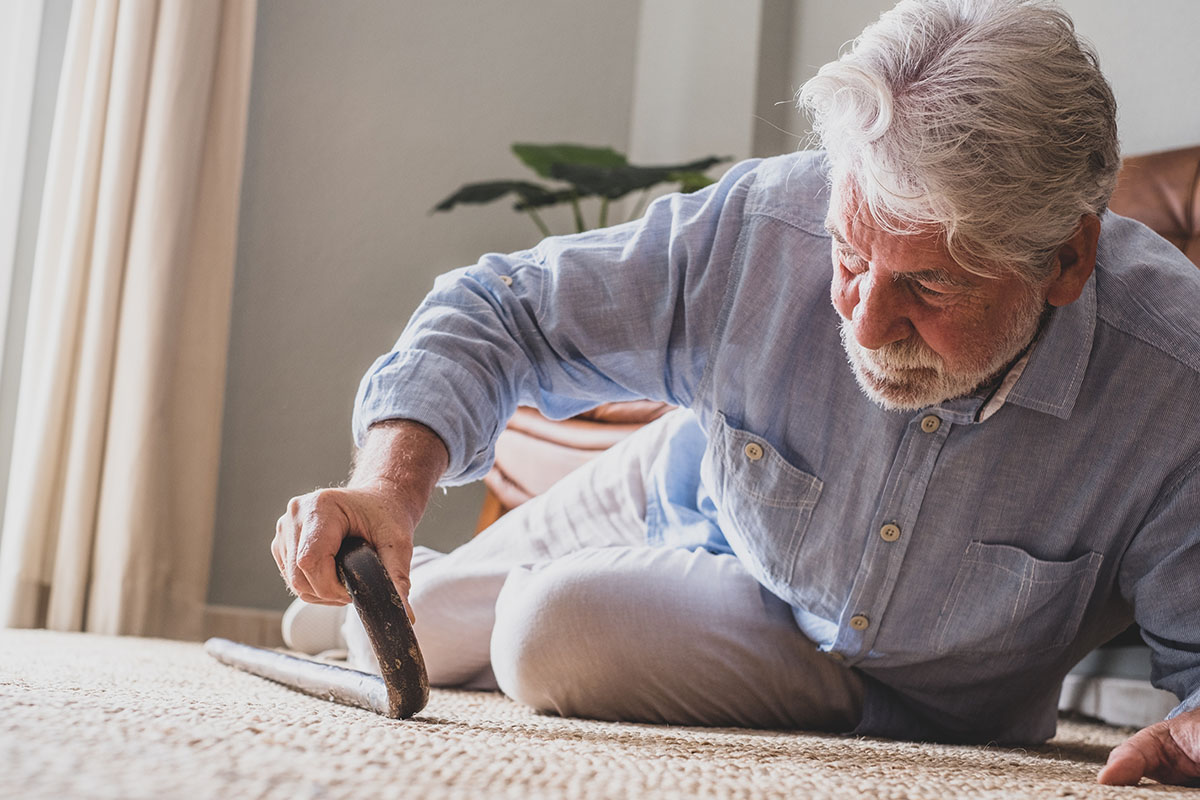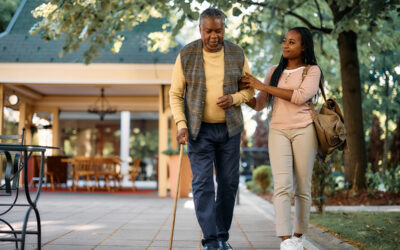Maintaining an active lifestyle is critical to managing Parkinson’s disease symptoms. A physical therapist (PT) can help keep you mobile by designing an exercise routine that meets your unique symptoms and needs.
Here’s an overview of how physical therapy benefits people with Parkinson’s disease and what to expect from a trip to the PT.
What Does a Physical Therapist Do?
Physical therapists are trained to design an exercise routine for specific motor impairments, guiding their patients in continued treatment.
A PT will provide education and self-management advice, answer questions related to your exercise regimen, help you maintain safety while exercising, and provide direct feedback to build awareness of exercising effectively.
Think of a PT as a part of your regular physical wellness program — just like the dentist, it’s a good idea to schedule regular visits to the PT, even when everything feels fine.
Benefits of Physical Therapy for PD

Parkinson’s disease (PD) is a progressive neurological disorder affecting movement and is characterized by symptoms such as tremors, muscle stiffness, slowness of movement, and impaired balance or coordination.
While the condition is chronic and progressive, research and clinical practice have demonstrated that regular exercise and physical therapy can play a vital role in improving the quality of life and functional independence of individuals with Parkinson’s disease.
Here’s how:
Improved Motor Function
Working with a PT can make literal strides in improvement to gait, joint mobility, and overall strength. A PT may incorporate specific exercises and walking strategies that help to retrain steps and improve stride length and cadence to make walking smoother and safer.
Additionally, a physical therapist may apply techniques to improve the range of motion of joints, easing movements and decreasing discomfort.
Further, progressive resistance training enhances motor function and counteracts muscle weakness that may occur with Parkinson’s disease or due to reduced physical activity.
Enhanced Balance & Coordination
Balance training exercises challenge and improve the individual’s stability, reducing the risk of falls.
Similarly, coordination exercises help manage bradykinesia (slowness of movement) and improve the fluidity and accuracy of movements.
Neuroplasticity
High-intensity aerobic exercises and skill training can promote neuroplasticity, the brain’s ability to reorganize and form new neural connections. This is crucial in Parkinson’s disease as it can help the brain compensate for lost functions or maximize remaining functions.
Delaying Disease Progression

While there’s no known cure for Parkinson’s disease, regular, targeted physical activity can help slow the decline in mobility and motor skills, potentially delaying the progression of the disease’s symptoms.
Improved Posture
PD sometimes leads to postural instability and a forward-leaning posture. Physical therapy includes exercises and strategies to improve posture and postural reactions, essential for daily activities and injury prevention.
Enhanced Quality of Life
By addressing mobility, strength, balance, and daily function, physical therapy helps individuals maintain their independence, while engaging in activities they enjoy and improving overall mental health, thus enhancing quality of life.
Improved Non-Motor Symptoms
Physical activity has been shown to improve mood, sleep, fatigue, and overall mental health — all of which can be affected by Parkinson’s.
Fall Prevention

Physical therapy significantly contributes to fall prevention, a common concern for individuals with Parkinson’s disease, by improving strength, flexibility, balance, and coordination.
Patient & Family Education
Physical therapists educate patients and families about PD and its management, creating a supportive environment and promoting an active lifestyle, which is crucial for managing the condition as the disease progresses.
What to Expect from a PT Appointment
Attending physical therapy sessions can be pivotal for people with Parkinson’s disease in managing their symptoms and enhancing their quality of life.
A physical therapist is a critical part of the care team, which may include an occupational therapist, speech therapist, movement disorder specialist, and neurologist. Physical therapy is especially beneficial when incorporated as part of this multidisciplinary approach to treatment.
Here’s what a person with Parkinson’s disease can expect during a physical therapy appointment and the types of treatments typically provided:
Initial Assessment
The first visit to a PT usually starts with a medical history review, physical assessment, and goal setting. The PT will explore the specifics of your PD diagnosis, including duration, medications, symptoms, and impact on daily life.
During the physical assessment, a PT will assess your current physical abilities, which may include motor symptoms (signs of tremors, rigidity, bradykinesia, postural instability), balance and gait and associated risk of falls, joint mobility and muscle strength, and functional mobility (ability to perform daily activities such as getting in and out of bed.)
Lastly, a physical therapist works with you to establish personal goals. These include improving walking ability, reducing the risk of falls, performing daily activities more efficiently, or participating in specific hobbies or activities.
Treatment Sessions
Treatment sessions in physical therapy for Parkinson’s disease are designed based on the initial assessment and individual goals and typically include:
- Aerobic and Conditioning Exercises: These exercises aim to improve cardiovascular fitness and overall stamina and potentially benefit brain health. Exercises include walking, cycling, swimming, or using equipment like treadmills or stationary bikes.
- Strength Training: Targeted exercises increase muscle strength, particularly in areas that enhance mobility and balance.
- Flexibility and Stretching Exercises: These improve the range of motion in joints, reduce rigidity, and help alleviate muscle cramps common in PD.
- Balance and Coordination Training: These exercises are crucial to reduce the risk of falls. They include practicing standing on one foot, walking on an uneven surface, or functional movements like standing from a sitting position.
- Gait Training: Therapists work with PD patients to improve their walking patterns. This might involve strategies to increase step length, improve speed or symmetry of walking, and techniques to overcome freezing of gait, a common symptom in PD.
- Postural Training: Exercises and strategies to improve posture are essential as PD often causes a forward stoop.
- Task-Specific Training: These exercises mimic daily activities, helping patients maintain independence in everyday tasks.
- Neuroprotective Exercises: Activities aimed at promoting brain health and potentially slowing disease progression. These are typically high-intensity exercises.
- Specialized Programs: Some physical therapists have training in specific PD exercise programs like LSVT BIG, which have structured protocols for improving movement amplitude and motor function in people with Parkinson’s. With LSVT BIG, a PT will have you make overexaggerated physical movements to retrain the muscles and slow the progression of hypokinesia (the shuffling movement associated with PD).
- Home Exercise Program: Your PT often provides exercise routines to practice daily at home to maintain and enhance the benefits gained during therapy sessions.
Ongoing Assessment and Adjustment

Throughout treatment, a physical therapist will continually assess your progress and adjust the treatment plan as necessary, considering the progressive nature of PD. This might involve changing exercises, introducing new activities, or addressing new symptoms or challenges.
A PT will also communicate with other members of your care team to ensure a comprehensive approach to treatment. This might include discussions or coordinated care plans with neurologists, primary care physicians, occupational therapists, or speech therapists.
Each person’s experience with PD is unique, so physical therapy interventions are tailored to individual needs and adjusted over time as the condition progresses. The primary aim is to maximize quality of life, safety, and functional independence.
Get the Most Out Of Physical Therapy
Deciding to meet with a PT on an ongoing basis is a fantastic first step to prioritizing your wellness. To maximize your appointments, make sure to implement these tactics:
- Ask Questions: Come prepared with questions and advocate for yourself during your appointment. A good PT will welcome and encourage questions throughout your session.
- Attend Regular Appointments: As you continue to attend appointments, your PT will check your progress and modify exercises as needs change. Be sure to continue your treatment regularly to stay on track.
- Practice Exercises At Home: Your PT will recommend safe exercises to practice outside of therapy. Incorporate these into your daily routine to maximize the benefits of physical therapy, and consider additional ways to increase physical activity as approved by your therapist.
Your experience with physical therapy will only be as good as the effort you put into it, so show yourself some love by prioritizing your appointments and exercises.
How to Find a Physical Therapist for PD

It’s important to note that the specific benefits a person might experience can vary depending on the stage of the disease, an individual’s overall health status, and the specificities of the therapy program.
However, engaging in a well-designed physical therapy program guided by a physical therapist with experience in Parkinson’s disease can offer substantial benefits in managing symptoms and improving quality of life.
To find a physical therapist who’s trained specifically in PD, ask for a referral from your neurologist or health care practitioner. PCLA also has a strong community of passionate individuals who are happy and willing to share references.
Check out our full calendar of support groups (in-person and virtual) and special events, plus the backlog of educational videos for more information on the benefits of physical therapy for PD.



How to get appointment with PT ,,lam from Kerala Iñdia.
How about fees?